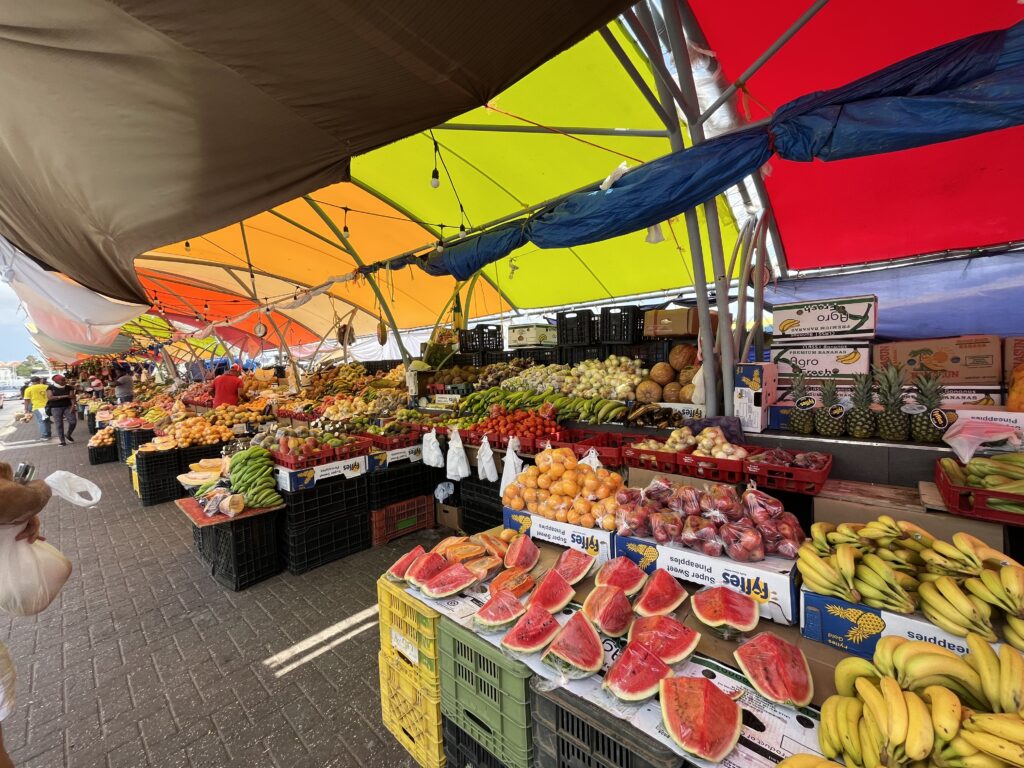
Summary: smoothies, when well prepared, should be an important part of your daily diet; in mine it is. Be careful with the hidden sugars though, as the negative effect of natural sugar is not different from that of added sugar!
1. Take it easy
People who write about health might come across as too fanatic. Sometimes they may also seem too principled. To a certain extent I am, but not too much, I hope. At home, we do eat some carbs. I do not mind the occasional croissant (from Lidl — they weigh less than 10 grams, are very fluffy, with hardly any butter, and cost 0.45 euro cents 😊), a sandwich with an egg, some sweet potato French fries, or rice crackers with goat cheese. A few pieces of dark chocolate, normally in the morning, and nuts (sometimes too much) during the day.
2. Not anti, just careful
Solid food-wise, we do not eat meat. We also do not have daily plates with pasta or rice. Nor do we have six sandwiches with the famous Dutch cheese or peanut butter. As I stressed before, my wife and I are not anti-carbs. We are also not anti-meat, and definitely not anti-Dutch cheese. When offered a delicious piece of Pavlova, I will not refuse. However, the emphasis on liquid food serves us well. Without eating less, my weight went down from 96 kg to 82 – 84 kg in one year. We do practice a light form of intermittent fasting (not eating for 12 – 14 hours per day).
More about my eating habits in other blogs, but for now the focus on morning & afternoon smoothie.
3. A “Liquid” Diet with Four Components
However, the main staple of my diet is “liquid”:
1. A large smoothie for breakfast and lunch (up to one liter).
2. A fresh soup for the evening (most of the time combined with fish), 0.4 liters.
3. Lemon juice to start the day and as a drink in between (1 liter). https://shakethehealthtree.com/index.php/2025/02/25/5-lemons-and-limes-health-project-99/
4. Two glasses of water/lemon juice with collagen and creatine (0.5 liters), one in the morning with added protein, and one in the evening without extra protein.
These quantities are rough indications only.
4. Be careful: risk of sugar overload
Smoothies can be great. They taste delicious. When prepared well, they can offer a load of useful nutrients, proteins, and fiber. However, there’s one risk: too much sugar. Recommended highest quantities of added sugar vary, depending on the country, gender, activity level, etc., ranging from 20 to 50 grams daily. This is not much .
5. Yes, there are differences between added and natural sugar, but…..
You often hear there’s a big difference between added sugars and natural sugars. While it’s true to some extent, natural sugars are part of whole foods and come with all their benefits. However, added sugar is simply sugar. Your body doesn’t distinguish between natural and added sugars. In short, be careful. Do not think that you can eat and drink unlimited amounts of milk, for example, or natural juices. They have natural sugar but they have same negative and highly addictive effects as added sugar. In other blogs, I will focus a lot on sugar.
6. Sugar Examples of popular smoothie input
In my smoothies, bananas contribute the most sugar, up to 15 grams per banana. Berries add about 5 grams per 100 grams, making them a better choice. Avoid milk, as it contains lactose—a form of sugar—beyond its fat content; in stead of milk I use unsweetened soya milk. Mangoes and pineapples, both popular smoothie ingredients, also have high natural sugar content, between 10 – 15 grams per 100 grams.
7. My Experience
In my daily diet, I easily consume half of my allowed sugar intake through smoothies alone. If I’m not careful, I consume even more. Therefore, with natural sugars included, I have about 20 – 25 grams left for the rest of the day. For instance, carrots, which I use in soup, have 5 grams of sugar per 100 grams, and light French quark adds 3-4 grams.
I don’t want to overwhelm you with details. The point is clear: with smoothies and evening soup, it’s easy to reach or exceed the daily sugar limit. This leaves few options for those who have a sweet tooth, perhaps allowing just a cookie or a small piece of apple pie. That’s why my go-to snack are nuts!
Okay, the smoothie as I prepare it (more or less)
- The liquid base consists of lemon juice (100 ml) and unsweetened soy milk (500 ml). It also includes some water. At times, it contains leftover soup from the evening before.
- I use banana and berries, or berries and mango, or just berries.
- I always add one avocado and some broccoli or spinach.
- In addition to these ingredients, I have a combined protein/collagen drink in the morning and collagen only in the evening (0.5 liter).
- For additional fiber, I include some fine oatmeal.
- I add one spoon of chia seeds. Then, I add two spoons of ground flax seeds and some black pepper. This is to enhance the effect of curcumin. I also add a teaspoon of cinnamon.
8. The end result?
Something very healthy, delicious and tasting remarkably sweet.
Enjoy your smoothie, enjoy your life,
Robert, your health friend

Central Park, New York City
